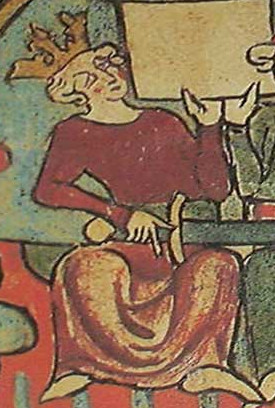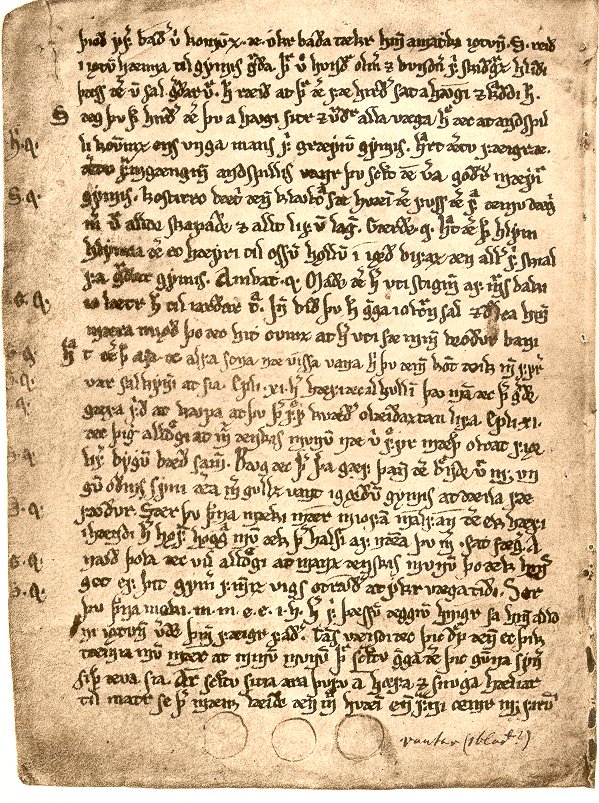|
Fimmbræðra Saga
''Fimmbræðra saga'' ('the saga of the five brothers') is an Icelandic romance-saga by the priest Jón Oddsson Hjaltalín (1749-1835). It has been characterised as Jón's most ambitious work, and 'in many ways the most interesting of the sagas which Jón authored, first and foremost because he was more successful here than in any other saga in combining influences from a great many different sources, local and foreign, ancient and new'. Summary In the summary of M. J. Driscoll, Jarl Addoníus of Dalmaría has five sons, Abel, Endor, Dathan, Símon and Kristófer, whom he has instructed in the arts and sciences, sports and languages, in all of which they excel. The earl, who is himself a Christian, sees that the brothers are attracted to a variety of religious beiefs, and asks each to explain what beliefs he holds. Abel, the eldest, says he follows the religion preached by Zoroaster, Endor claims to believe in Óðinn, Dathan in Muhammad, and Símon in Judaism, which Kristófer, ... [...More Info...] [...Related Items...] OR: [Wikipedia] [Google] [Baidu] |
Chivalric Sagas
The ''riddarasögur'' (literally 'sagas of knights', also known in English as 'chivalric sagas', 'romance-sagas', 'knights' sagas', 'sagas of chivalry') are Norse prose sagas of the romance genre. Starting in the thirteenth century with Norse translations of French '' chansons de geste'' and Latin romances and histories, the genre expanded in Iceland to indigenous creations in a similar style. While the ''riddarasögur'' were widely read in Iceland for many centuries they have traditionally been regarded as popular literature inferior in artistic quality to the Icelanders' sagas and other indigenous genres. Receiving little attention from scholars of Old Norse literature, many remain untranslated. The production of chivalric sagas in Scandinavia was focused on Norway in the thirteenth century and then Iceland in the fourteenth. Vernacular Danish and Swedish romances came to prominence rather later and were generally in verse; the most famous of these are the Eufemiavisorna, them ... [...More Info...] [...Related Items...] OR: [Wikipedia] [Google] [Baidu] |
Jón Oddsson Hjaltalín
Jón Oddsson Hjaltalín (1749-25 December 1835) was an Icelandic priest and writer. He composed verse and prose, and his writing was influenced by Icelandic tradition, Christian learning, and Enlightenment thought. Biography Jón graduated from Skálholtsskóli in 1776 and became a priest at Háls in Hamarsfjörður 7 April 1777. He then took up the ministry at Kálfafell on 12 July 1780, before proceeding to Hvammur in Norðurárdalur on 9 June 1783. Then, in 1786, he moved to Saurbær in Hvalfjarðarströnd 1786. He finished his career by taking up the ministry at Breiðabólstaður in Skógarströnd 1811, where he remained before retiring on 1 February 1835. During this time, he was also offered the position at Helgafell, but chose not to accept it. Jón was noted for his achievements in many fields, and today is best known for his many songs, psalms, ''rímur'' and sagas. The main biographical study of Jón is by Matthew James Driscoll.Matthew James Driscoll, ''The Unwa ... [...More Info...] [...Related Items...] OR: [Wikipedia] [Google] [Baidu] |
Völuspá
''Vǫluspá'' (also ''Völuspá'', ''Vǫlospá'' or ''Vǫluspǫ́''; Old Norse: 'Prophecy of the völva, a seeress'; reconstructed Old Norse: ) is the best known poem of the ''Poetic Edda''. It tells the story of the creation of the world and its coming end and subsequent rebirth, related to the audience by a völva addressing Odin. It is one of the most important primary sources for the study of Norse mythology. The poem is preserved whole in the Codex Regius and Hauksbók manuscripts while parts of it are quoted in the ''Prose Edda''. Preservation ''Völuspá'' is found in the Icelandic Codex Regius manuscript (ca. 1270) and in Haukr Erlendsson's ''Hauksbók'' Codex (ca. 1334), and many of its stanzas are quoted or paraphrased in the Prose Edda (composed ca. 1220, oldest extant manuscript dates from ca. 1300). The order and number of the stanzas varies in these sources. Some editors and translators have further rearranged the material. The Codex Regius version is usually tak ... [...More Info...] [...Related Items...] OR: [Wikipedia] [Google] [Baidu] |
Heimskringla
''Heimskringla'' () is the best known of the Old Norse kings' sagas. It was written in Old Norse in Iceland by the poet and historian Snorre Sturlason (1178/79–1241) 1230. The name ''Heimskringla'' was first used in the 17th century, derived from the first two words of one of the manuscripts (''kringla heimsins'', "the circle of the world"). ''Heimskringla'' is a collection of sagas about Swedish and Norwegian kings, beginning with the saga of the legendary Swedish dynasty of the Ynglings, followed by accounts of historical Norwegian rulers from Harald Fairhair of the 9th century up to the death of the pretender Eystein Meyla in 1177. The exact sources of the Snorri's work are disputed, but they include earlier kings' sagas, such as Morkinskinna, Fagrskinna and the 12th-century Norwegian synoptic histories and oral traditions, notably many skaldic poems. He explicitly names the now lost work ''Hryggjarstykki'' as his source for the events of the mid-12th century. Although Sno ... [...More Info...] [...Related Items...] OR: [Wikipedia] [Google] [Baidu] |
Ludvig Holberg
Ludvig Holberg, Baron of Holberg (3 December 1684 – 28 January 1754) was a writer, essayist, philosopher, historian and playwright born in Bergen, Norway, during the time of the Dano-Norwegian dual monarchy. He was influenced by Humanism, the Enlightenment and the Baroque. Holberg is considered the founder of modern Danish and Norwegian literature. He is best known for the comedies he wrote in 1722–1723 for the Lille Grønnegade Theatre in Copenhagen. Holberg's works about natural and common law were widely read by many Danish law students over two hundred years, from 1736 to 1936. Studies and teaching Holberg was the youngest of six brothers. His father, Christian Nielsen Holberg, died before Ludvig was one year old. He was educated in Copenhagen, and was a teacher at the University of Copenhagen for many years. At the same time, he started his successful career as an author, writing the first of a series of comedies. He began to study theology at the University of ... [...More Info...] [...Related Items...] OR: [Wikipedia] [Google] [Baidu] |
Zadig
''Zadig; or, The Book of Fate'' (french: Zadig ou la Destinée; 1747) is a novella and work of philosophical fiction by the Enlightenment writer Voltaire. It tells the story of Zadig, a Zoroastrian philosopher in ancient Babylonia. The story of Zadig is a fictional story. Voltaire does not attempt any historical accuracy. The singular narrative and Unique journey of Zadig will stand for eternity as a philosophical reference to “nothing is either good or bad without the comparison of one with the other.” It was originally published as ''Memnon'' in Amsterdam (with a false imprint of London given) and first issued under its more familiar title in 1748. The book makes use of the Persian tale ''The Three Princes of Serendip''. It is philosophical in nature, and presents human life as in the hands of a destiny beyond human control. Voltaire challenges religious and metaphysical orthodoxy with his presentation of the moral revolution taking place in Zadig himself. ''Zadig'' is ... [...More Info...] [...Related Items...] OR: [Wikipedia] [Google] [Baidu] |
Voltaire
François-Marie Arouet (; 21 November 169430 May 1778) was a French Age of Enlightenment, Enlightenment writer, historian, and philosopher. Known by his ''Pen name, nom de plume'' M. de Voltaire (; also ; ), he was famous for his wit, and his criticism of Christianity—especially Criticism of the Catholic Church, of the Roman Catholic Church—and of slavery. Voltaire was an advocate of freedom of speech, freedom of religion, and separation of church and state. Voltaire was a versatile and prolific writer, producing works in almost every literary form, including stageplay, plays, poems, novels, essays, histories, and scientific Exposition (narrative), expositions. He wrote more than 20,000 letters and 2,000 books and pamphlets. Voltaire was one of the first authors to become renowned and commercially successful internationally. He was an outspoken advocate of civil liberties and was at constant risk from the strict censorship laws of the Catholic French monarchy. His polemics ... [...More Info...] [...Related Items...] OR: [Wikipedia] [Google] [Baidu] |
Icelandic Literature
Icelandic literature refers to literature written in Iceland or by Icelandic people. It is best known for the sagas written in medieval times, starting in the 13th century. As Icelandic and Old Norse are almost the same, and because Icelandic works constitute most of Old Norse literature, Old Norse literature is often wrongly considered a subset of Icelandic literature. However, works by Norwegians are present in the standard reader ''Sýnisbók íslenzkra bókmennta til miðrar átjándu aldar'', compiled by Sigurður Nordal on the grounds that the language was the same. Early Icelandic literature The medieval Icelandic literature is usually divided into three parts: *Eddic poetry *Sagas *Skaldic poetry The ''Eddas'' There has been some discussion on the probable etymology of the term "Edda". Most say it stems from the Old Norse term ''edda'', which means great-grandmother, but some see a reference to Oddi, a place where Snorri Sturluson Snorri Sturluson ( ; ; 1179 – 22 S ... [...More Info...] [...Related Items...] OR: [Wikipedia] [Google] [Baidu] |




